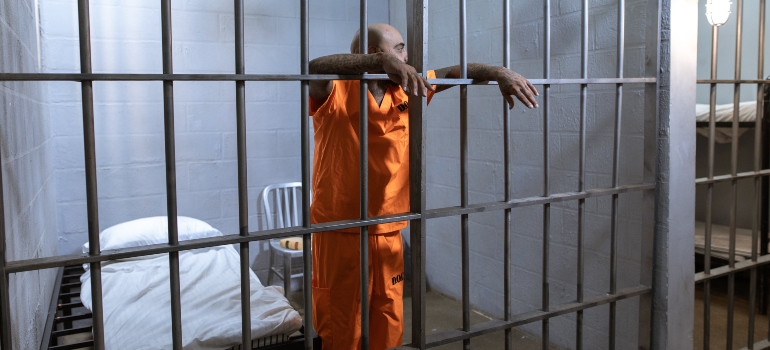As the state of West Virginia grapples with the relentless grip of the opioid crisis, a pioneering approach has emerged to address addiction within the confines of its correctional facilities. Methadone maintenance treatment in WV correctional facilities is not just a lifeline but a hope for incarcerated individuals battling opioid addiction. In this blog post, one of the experienced addiction treatment centers in West Virginia will look into the MMT initiative, exploring how it reshapes the landscape of addiction treatment behind bars.
Methadone Maintenance Treatment Explained
Methadone is a medication used to help people struggling with opioid addiction. It works by attaching to the same parts of the brain that other opioids, like heroin or painkillers, attach to. Therefore, it is particularly valuable for processes such as fentanyl detox treatment. But here’s the important part: Methadone does this in a much slower and gentler way, preventing the intense high and withdrawal symptoms. Think of it as a smooth, steady ride on a rollercoaster rather than the wild ups and downs of a fast one.

This steadiness helps people with addiction stay in control and avoid the harmful ups and downs of drug cravings. Methadone doesn’t make addiction disappear, but it gives people a chance to deal with addiction and work on their recovery without constantly chasing the next high. It’s a tool to help them rebuild their lives, one step at a time.
Goals and Outcomes of MMT Programs
The primary goal of methadone maintenance treatment (MMT) programs is to facilitate harm reduction for individuals with opioid addiction and help them work toward lasting recovery. Here are the key goals and desired outcomes of MMT programs:
- Reduction of Opioid Use: The foremost objective of MMT is to reduce or eliminate the use of illicit opioids like heroin. Providing a consistent and medically supervised dose of methadone helps individuals avoid the dangerous cycle of seeking and using street drugs.
- Stabilization: MMT aims to stabilize the lives of participants. This includes minimizing drug cravings, preventing withdrawal symptoms, and providing a sense of normalcy. Stability allows individuals to focus on other aspects of their lives.
- Improved Health: MMT programs aim to enhance the overall health of struggling individuals. By reducing the risks associated with illicit drug use, such as overdose and the transmission of infectious diseases (like HIV and hepatitis), participants can experience better physical and mental health.
- Engagement in Comprehensive Care: Successful MMT programs integrate medical, psychological, and social services. This means that participants have access to various support services, including counseling, therapy for addiction, and case management.
- Long-Term Recovery: The desired outcome of MMT is to support individuals in achieving long-term recovery from opioid addiction. While methadone itself isn’t a cure, it provides a bridge to recovery by offering a stable foundation.
Comparison of MMT with Other Forms of Medication-Assisted Treatment
It’s important to recognize that each approach has unique strengths and considerations. Methadone, with its long-lasting effects and ability to suppress withdrawal symptoms effectively, is often chosen when a more intensive and supervised treatment is needed, such as during West Virginia heroin rehab.
Buprenorphine, another common MAT medication, offers a different approach with a lower risk of overdose and a ceiling effect on opioid effects. Naltrexone, on the other hand, is an antagonist medication that blocks the effects of opioids entirely.

The choice between these options depends on an individual’s specific needs, the severity of their addiction, and their treatment goals. What sets Methadone apart is its long history of success in stabilizing the lives of those in opiate rehab in West Virginia.
Substance Abuse and Incarceration in West Virginia
West Virginia has the highest rate of opioid-dependent inmates. Statistical data reveals that 58% of inmates in the state prison have drug-related issues, particularly involving opioids like heroin and prescription painkillers. Also, a staggering 63% of individuals in local jails are addicts.
The opioid epidemic has exerted a considerable strain on West Virginia’s correctional system. A surge in drug-related arrests and convictions has led to overcrowded facilities and increased healthcare costs related to the treatment of opioid withdrawal, infectious diseases, and overdose cases among inmates. Additionally, the opioid crisis has cost the state over $8.72 billion, and it has contributed to the perpetuation of a cycle of incarceration and recidivism. WV has a recidivism rate of 24% in 2023.
Legal Framework Supporting Methadone Maintenance Treatment in WV Correctional Facilities
The legal framework that supports methadone maintenance treatment in WV correctional facilities represents a crucial move in response to the opioid crisis. It involves creating and implementing specific laws and policies that allow for the introduction of MMT programs within these institutions.
These legal guidelines highlight the significance of providing addiction treatment grounded in solid evidence, with a focus on reducing the chances of overdose and promoting rehabilitation among incarcerated individuals. The legal support for MMT within the correctional system aligns with broader statewide efforts aimed at combating the opioid epidemic and addressing the various ways in which this crisis impacts the criminal justice system.
Implementation of Methadone Maintenance Treatment in WV Correctional Facilities
The criteria for selecting inmates to participate in MMT programs is crucial. This will ensure that it targets those who will benefit the most. In most cases, eligibility for MMT is extended to inmates with a documented history of opioid use disorder (OUD). However, the decision isn’t solely based on this history.
Healthcare professionals within the correctional facility will assess each inmate’s suitability for the program. These assessments take into account various factors, including the severity of the individual’s addiction, their past experiences with substance abuse treatment WV offers, and an assessment of whether MMT could offer substantial benefits to their specific situation.
Structure of MMT Programs in Prisons and Jails
MMT programs are typically organized to provide daily supervised dosing of methadone. Such daily administration ensures that inmates receive their medication consistently, reducing the risk of diversion or misuse. Additionally, MMT programs often involve counseling and individual therapy for addiction, aiming to address the psychological and social aspects of addiction. Inmates may also receive education on the risks of overdose and infectious diseases.

Furthermore, it is important that correctional facility staff, including medical personnel, security staff, and counselors, are well-trained and informed. Training programs educate staff on the principles of MMT, its benefits, and the importance of providing compassionate, non-stigmatizing care to inmates. Staff training also covers the proper dispensing and monitoring of methadone, recognizing potential side effects or overdose symptoms, and understanding the behavioral changes that may accompany the early stages of treatment.
Challenges of MMT in WV Correctional Settings
It’s necessary to be aware that implementing methadone maintenance treatment in correctional facilities in WV comes with a unique set of challenges:
- Security Concerns: Correctional facilities must address security concerns related to the presence of methadone, which is a controlled substance. Safeguarding against diversion, misuse, or potential illicit trade of methadone within the prison or jail is a constant challenge.
- Stigma and Resistance: There can be stigma about MMT among both inmates and staff. Some individuals may prefer holistic therapy for addiction and resist the idea of using a medication to treat addiction, viewing it as merely substituting one drug for another.
- Limited Resources: Many correctional facilities face resource constraints, including budgets and staffing shortages. Implementing MMT requires funding for medical staff, medications, counseling services, and infrastructure.
- Complex Regulatory Framework: Managing MMT within the complex regulatory environment of correctional facilities can be challenging. Compliance with state and federal regulations and ensuring proper dispensing, monitoring, and documentation can be demanding.
- Inmate Turnover: Inmates in correctional settings often have short sentences or frequent transfers, making it challenging to provide continuous, long-term MMT.
- Reentry and Continuity of Care: Preparing inmates for a successful transition to the community after release is crucial. Coordination with external healthcare providers and ensuring access to MMT in the community is often challenging.
- Overdose Risk After Release: There is an increased risk of overdose after release for individuals on MMT.
Benefits of Methadone Maintenance Treatment in WV Correctional Facilities
Although MMT in a correctional setting may seem challenging, it has numerous benefits. It can help both the inmates and the community. Some of the most noteworthy ones include:
- Reduction in Drug Cravings and Withdrawal: MMT effectively suppresses opioid withdrawal symptoms and cravings. This can lead to improved behavior and a lower likelihood of drug-related incidents within the correctional facility.
- Decreased Risk of Overdose: In correctional settings, where illicit drug use can be particularly dangerous, MMT reduces the risk of overdose.
- Reduced Risk of Infectious Diseases: MMT can contribute to lower rates of infectious diseases like HIV and Hepatitis C, benefiting both incarcerated individuals and the broader community.
- Increased Likelihood of Rehabilitation: For individuals with OUD, MMT can provide a pathway to recovery. It also reduces the likelihood of reoffending.
- Community Safety: When individuals with OUD receive MMT during their incarceration, they are better prepared for reintegration into the community. This can lead to lower recidivism rates and improved community safety.
- Cost Savings: While there are initial costs of implementing MMT programs, the potential long-term savings from reduced criminal justice expenses, healthcare costs, and the economic burden of untreated addiction can be significant.
- Successful Reentry to Community: For individuals who continue MMT upon release, it can provide a bridge to comprehensive treatment and recovery.

Ethical Obligation to Provide Healthcare to Inmates
The ethical obligation to provide healthcare to inmates is rooted in several fundamental principles. Regardless of their legal status or circumstances, each person possesses inherent human dignity. As a form of punishment, incarceration does not strip individuals of their basic human rights, including the right to healthcare.
Non-maleficence requires healthcare providers and institutions to “do no harm.” Failing to provide healthcare to inmates when needed can result in needless suffering and harm, both to the individuals themselves and to the broader society. Healthcare providers have an ethical obligation to act in the best interests of their patients.
The ethical principle of justice demands that all individuals be treated fairly and equitably. Providing healthcare to inmates ensures that they are not subjected to cruel or unusual punishment and that they have access to a basic standard of care that is available to the general population.
Finally, failure to provide healthcare to inmates can result in public health risks. Infectious diseases can spread within correctional facilities and, upon release, into the broader community.
Addressing Human Rights Issues Related to MMT Access
Addressing human rights issues in the context of MMT is fundamentally rooted in the principles of consent and autonomy. Consent ensures that individuals, even in the restrictive environment of a correctional facility, have the right to make informed decisions about their healthcare. They need to understand the nature of the treatment, its potential benefits, risks, and alternatives.
In this context, autonomy means respecting their ability to choose treatment options voluntarily, free from coercion. It recognizes their inherent dignity and right to control their own bodies. Therefore, mechanisms for voluntary enrollment and non-discrimination are essential.

Additionally, inmates should have a say in their treatment plans, including methadone maintenance treatment. Respect for autonomy means involving them in decisions about dosing, tapering, and the overall management of their addiction treatment.
MMT’s Impact on WV Correctional Facilities
Methadone maintenance treatment in WV correctional facilities is a vital and compassionate approach to addressing opioid addiction. By focusing on harm reduction, rehabilitation, and human rights, it offers a promising solution to the challenges posed by the opioid crisis in the criminal justice system. While challenges persist, the benefits of MMT in terms of reducing drug-related incidents, improving public health, and enhancing the prospects of successful reintegration are significant.



